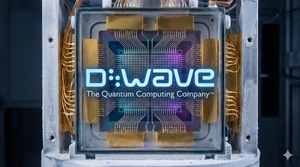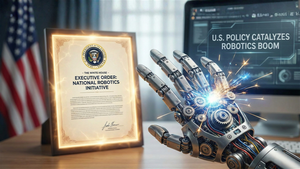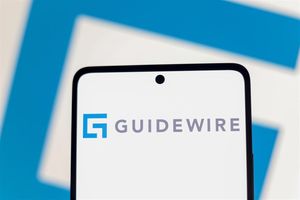Best AI Patent Drawing Tool: Transform Photos to USPTO-Compliant Drawings
If you’re a patent attorney, inventor, or business owner preparing a patent application, you know how frustrating the drawing requirements can be. The United States Patent and Trademark Office (USPTO) demands precise black-and-white line drawings, yet most people only have product photos or rough sketches. Hiring a professional illustrator can cost hundreds of dollars per drawing and take days to complete. What if there was a faster, more affordable way?
In this article, you’ll discover:
- What makes a patent drawing compliant with USPTO standards
- How AI technology is revolutionizing patent illustration
- The best AI patent drawing tool for converting photos to line drawings
- Step-by-step instructions for creating professional patent drawings
- Answers to common questions about patent drawing requirements
What is Patent Drawing?
A patent drawing is a visual representation of an invention that accompanies a patent application. In the United States, the USPTO requires these drawings to follow strict formatting rules to ensure clarity and consistency across all patent documents.
USPTO Patent Drawing Requirements
The USPTO has specific guidelines that every patent drawing must meet. These drawings must be created in black ink on white paper, with clean lines and no shading or color. Each drawing should clearly show every feature mentioned in the patent claims, using reference numbers that correspond to the written description.
The margins must be precise: one inch at the top, left side, and right side, with at least three-quarters of an inch at the bottom. All lines must be solid and dark enough to reproduce clearly when scanned or photocopied. Photographs are generally not acceptable unless they’re the only way to illustrate the invention, and even then, they must meet specific quality standards.
Why Patent Drawings Matter
Patent examiners rely on these drawings to understand your invention quickly. A well-prepared drawing can speed up the examination process, while a poor one can lead to rejections and delays. The drawings also become part of the public record, helping others understand the scope of your patent protection.
For patent attorneys and agents, creating compliant drawings is a time-consuming bottleneck. Traditional methods involve either hand-drawing each illustration or hiring a technical illustrator, both of which are expensive and slow.
Best AI Patent Drawing Tool for Patent Attorneys
Xole AI Image Generator stands out as the best AI patent drawing tool for patent professionals and inventors. Using the Turn Photo to Patent Drawing feature, you can transform photographs into USPTO-compliant line drawings within minutes. This advanced technology recognizes edges, separates important features from backgrounds, and converts complex images into clean line work that meets patent office standards.
Traditional methods like hand-drawing or hiring illustrators are expensive and time-consuming. Xole AI eliminates these barriers by generating professional patent drawings from photos in seconds, saving up to 80% of time and cost while maintaining the quality standards required for patent applications.

Key Features of the Best AI Patent Drawing Tool
When evaluating AI patent drawing tools, several features separate exceptional solutions from basic converters. The best AI patent drawing tool should offer comprehensive capabilities that address the specific needs of patent applications.
Photo to Line Drawing Conversion
The core functionality is transforming photographs into clean line drawings. The Turn Photo to Patent Drawing feature uses intelligent edge detection to identify the important contours of your invention while removing unnecessary details like shadows, reflections, and background clutter.
This conversion process analyzes the image structure and generates vector-quality lines that remain crisp at any size. Unlike simple filters that just trace edges, advanced AI understands which elements matter for patent documentation and emphasizes them appropriately.
AI-Assisted Refinement
The best AI patent drawing tool doesn’t just convert images blindly. It provides intelligent assistance for refining the output. You can use text prompts to adjust specific aspects of the drawing, such as emphasizing certain features, simplifying complex areas, or adding clarity to mechanical components.
The Xole AI technology powers this refinement process, allowing you to describe the changes you need in plain language. The AI interprets your instructions and modifies the drawing accordingly, giving you precise control without requiring manual editing skills.
Multiple Drawing Styles
Different inventions require different visual approaches. Mechanical devices need exploded views showing assembly relationships. Electronic circuits require schematic representations. Chemical compounds benefit from structural diagrams. The best AI patent drawing tool offers various style options to match your specific invention type.
Batch Processing Capability
Patent applications often require multiple drawings showing different views and details. Efficient tools allow you to process several images simultaneously, maintaining consistency across all illustrations while saving valuable time.
Compliance Checking
The best AI patent drawing tool includes built-in validation to ensure your drawings meet USPTO requirements. This automated checking verifies line weight, margin spacing, image clarity, and other technical specifications before you submit your application.
How to Use the Best AI Patent Drawing Tool
Creating professional patent drawings with AI technology is straightforward, even if you have no illustration experience. Here’s a practical guide to transforming your photos into USPTO-compliant drawings.
Step 1: Prepare Your Source Images
Start with clear photographs of your invention. Take multiple angles showing different aspects and components. Ensure good lighting without harsh shadows. Use a plain white or light-colored backdrop to help the AI distinguish your invention from the surroundings.
Step 2: Upload and Convert
Upload your prepared images to the tool. The AI immediately begins analyzing the photos, identifying edges, and creating line work. Select your preferred drawing style based on your invention type.
Step 3: Refine with AI Assistance
Review the drawing carefully. Use the AI refinement features to adjust any areas that need improvement. You can type instructions like “emphasize the connection points” or “simplify the background elements” and the AI updates the drawing accordingly.
Step 4: Add Reference Numbers
Use the annotation tools to add reference numbers that correspond to elements in your patent claims. The tool provides guidelines to ensure proper number placement and formatting.

Step 5: Export and Verify
Download your completed drawings in high-resolution PNG or PDF format. Use the compliance checker to verify that your drawings meet all USPTO requirements regarding margins, line weight, and clarity.
FAQ About Patent Drawing
How much do professional patent drawings typically cost?
Professional patent illustrators charge between $50 to $300 per drawing, depending on complexity. A typical patent application with 5-10 drawings can cost $500 to $2,000. The best AI patent drawing tool reduces this cost by 90% or more while delivering comparable quality.
Can I use photographs in my patent application?
The USPTO generally requires line drawings rather than photographs. Photos may be acceptable in limited cases where the invention cannot be adequately illustrated through drawings alone. Converting photos to line drawings with an AI patent drawing tool is the safer approach.
What happens if my patent drawings don’t meet USPTO requirements?
If your drawings fail to meet USPTO standards, the examiner will issue an objection. You’ll need to submit corrected drawings, which delays your application and may require additional fees. Using the best AI patent drawing tool with built-in compliance checking helps avoid these rejections.
Conclusion
Creating USPTO-compliant patent drawings no longer requires expensive illustrators or specialized software skills. The best AI patent drawing tool combines artificial intelligence with patent-specific expertise to deliver professional results quickly and affordably. By transforming photos into precise line drawings, these AI-powered solutions save patent attorneys, inventors, and businesses both time and money.
Whether you’re preparing your first patent application or managing dozens for clients, adopting an AI patent drawing tool streamlines the process while maintaining the quality standards required by the USPTO. The technology makes professional patent illustration accessible to anyone, helping you meet deadlines and reduce costs without compromising on quality.
More News
View More




Recent Quotes
View More
Quotes delayed at least 20 minutes.
By accessing this page, you agree to the Privacy Policy and Terms Of Service.